County Farms & Smallholdings
- 2nd July 2018
The 20th century was a period of rapid industrial, economic, social, cultural and technological change. These changes, often driven and most certainly overshadowed by war, transformed the English landscape, adding another layer of complexity to England’s long history of re-invention. Many people, through the experiences of their parents and grandparents, feel a deep connection to this period of recent history and there is increasing conservation interest associated with 20th century heritage, in particular the rich legacy of 20th century architecture.
As with any other period, the architecture and public places of the 20th century, reflects the changing life styles and attitudes of wider society.
In this blog we explore how a desire to tackle agricultural decline, coupled with a rise in social idealism and collective responsibility, encouraged the development of Worcestershire’s County Farms and Smallholdings.
County Farms and Smallholdings are important to both the rural economy and rural communities, providing a mechanism within which farmers, and in particular young farmers, can progress up the farming ladder. A recent Who Owns England Report (June 8th 2018), revealed, however, that the extent of County Farms in England has halved in the last 40 years, reflecting a more general decline in small scale farming enterprises.
The history of County Farms and Smallholdings can be traced back to the development of the allotment and smallholdings movement in the first half of the 19th century. By the late 19th century, a series of land reforms, most famously championed by Liberal MPs Joseph Chamberlain and Jesse Collings, encouraged the purchase of land by local authorities for all labourers who might desire them. The movement reached its peak in the first half of the 20th century when smallholdings were made available for servicemen returning from the Great War; from the 1930s they were promoted as a mechanism to relieve long term unemployment and encourage good health and military fitness (Wade Martins, 2006, 304).
County Farms and Smallholdings in Worcestershire – where did it all begin?
The 1892 Smallholdings Act gave County Councils the authority to buy land for smallholdings, as distinct from allotments, that could be ‘sold by hire-purchase to the occupants with one fifth of the purchase price to be paid as a down payment and the balance over a number of years’ (Wade Martins, 2006 305). They were not, however, obliged to do so and many County Councils were reluctant to take up these new legislative powers.
‘In those counties where comparatively little has been done the Councils themselves are often apathetic, if not actually hostile to the working of the Act. The opinion of the County Council is in most cases a faithful reflex of the opinion of the landowner and the large farmer’ (Dyke Acland, 1913, The Unsatisfied Demand 219).
Worcestershire County Council is noted, however, as being at the forefront of smallholding development, when in 1892 it was the first Local Authority to purchase a farm, of 146 acres, which was subsequently divided into 32 smallholdings (Collings, 1906, 212-3 cited in Wade Martins, 2006, 306).
The Worcestershire County Council Smallholdings Committee was set up on the 12th December 1892. Their first committee meeting was held on Saturday 31st December; Mr. John William Willis-Bund was elected as chairman. The minute books of the Smallholdings Committee, held at Explore the Past, at The Hive, reveal that by 18th September 1893 the board had already received their first requests for land from the Lickey Electoral Division and from the Southern and Evesham Division.
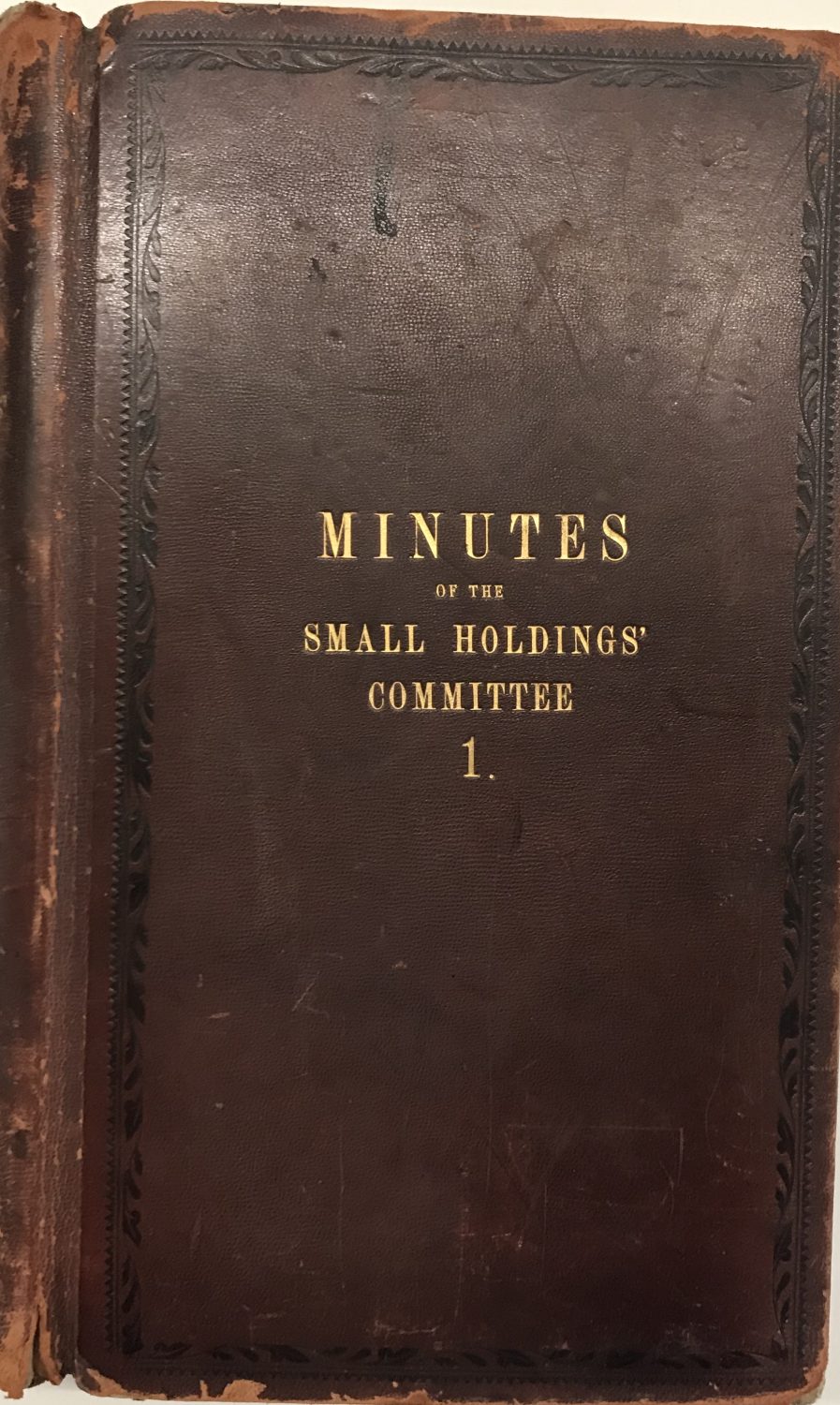
Front Cover of the Minutes of the Small Holdings Committee Vol. 1 deposited at Explore the Past. Photograph © Worcestershire Archive and Archaeology Service
By the 28th October the committee were moving forward with regards to acquiring land in the Lickey Electoral Division (the acquisition of land in the Southern and Evesham Division had been postponed) and by 30th December they were looking at purchasing a portion of Woodrow Farm in Catshill. The farm is documented as being 123 acres, 0 roods and 32 perches. By this point, the committee had received more petitions for land from the Lickey Electoral Division as well as from Kings Norton and Hallow North. All were postponed; it appears that the committee were taking a more cautious approach, focusing on Woodrow Farm as a ‘pilot’ before committing to the more widespread acquisition of land. By the 10th February, 1894, the committee recommended that the council put into action Part 1 of the Smallholdings Act and purchase the land at Woodrow Farm (now noted as 147 acres, 0 roods and 22 perches), at £33 per acre, including timber.
On 5th January, 1895 the committee agreed to the appointment of land agent Arthur W Kemp for the purpose of advising and reporting to the committee on the division and fencing of land, at Woodrow Farm and the making of roads. Kemp was also charged with preparing a plan of the property. By 30th March the committee had received Kemp’s report which concluded that the boundary fences and inner fences were in unsatisfactory condition and timbers of little importance. In dividing up the estate particular attention was given so as to provide a road frontage to each of the 32 holdings. It was also noted that there were no ponds or present means of obtaining water. The 32 holdings varied in size from 2 ¾ acres to 7 acres and were to be divided by continuous iron fencing. The cost of all of the proposed work was estimated at £1300 (£750 without the fencing). On 5th January the committee also authorised the temporary letting of the smallholdings to suitable tenants.
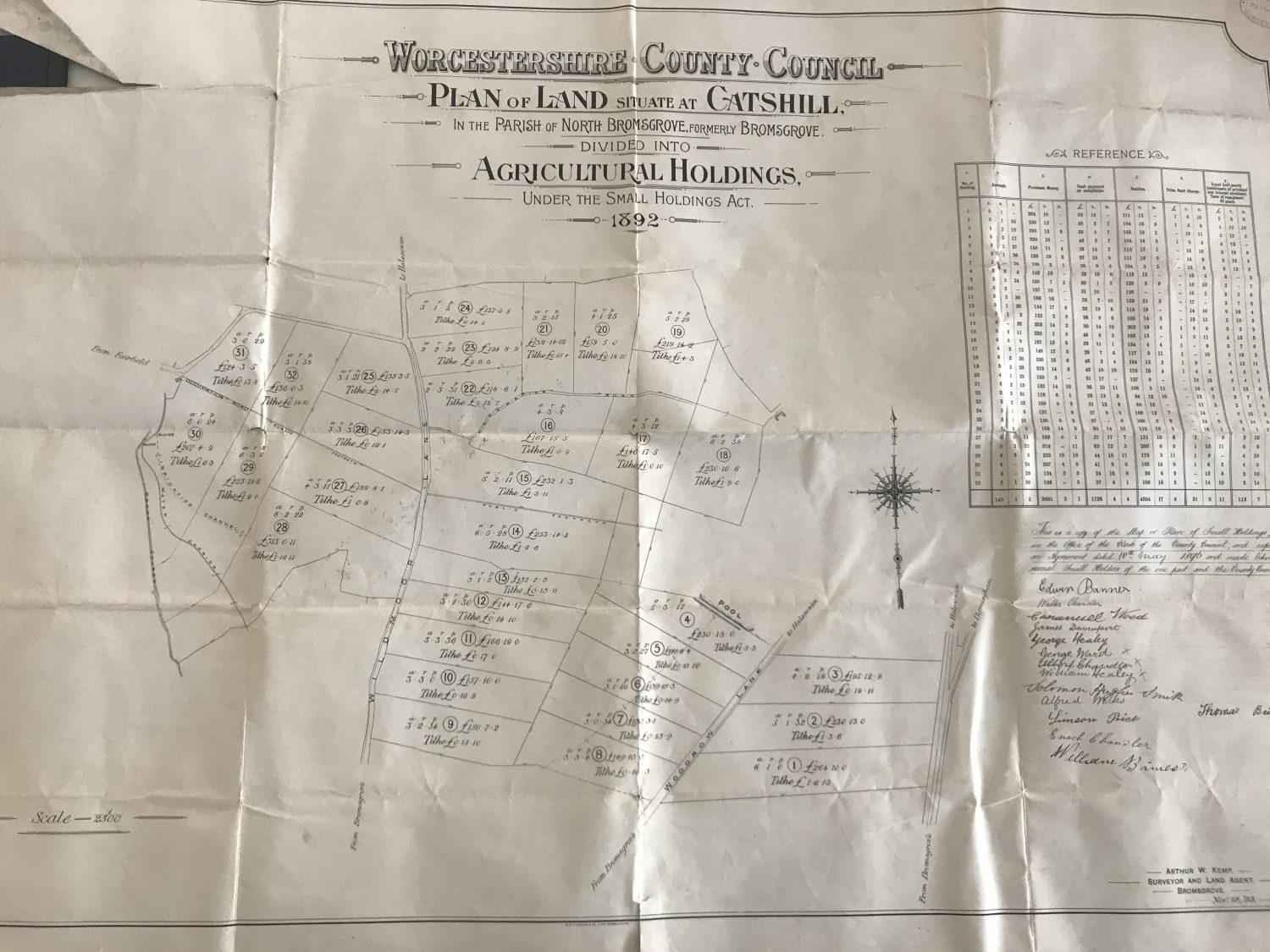
A Plan of land situate at Catshill in the Parish of North Bromsgrove formally Bromsgrove divided into Agricultural Holdings under the Smallholdings Act, 1982. Photograph © Worcestershire Archive and Archaeology Service
A committee entry, dated 27th April, 1895, reports that ‘in accordance with minute No. 48 we attended on April 5th with Mr Thornely and Mr Kemp at Lickey End and effected the following lettings until September 29th’
| Name of the Tenant | Residence | Name of Field | State | Acreage (a. r. p) | Rent from 19th April to 29th Sept 1895
(£. s. d) |
|
| 1. | William Birmer | Wildmoor, Catshill | Thirstly Meadow(and part of Rye Hills) | Pasture and arable | 7. 2. 7 | 11. 6. 4 |
| 2. | Enoch Chandler | Catshill | Long Meadow | Pasture | 9. 2. 29 | 8. 9. 5 |
| 3. | James Davenport | Catshill | Blickfield (part) | Arable | 5. 0. 3 | 8. 15. 8 |
| 4. | Abel Gould | Wildmoor, Catshill | Blickfield (part) | do. | 2. 0. 0 | 3. 10. 0 |
| 5. | Thomas Hunt | Bourneheath | Blickfield (part) | do. | 1. 3. 20 | 3. 5. 7 |
| 6. | Nehemiah Juggins | Catshill | Blickfield (part) | do. | 3. 0. 9 | 5. 6. 11 |
| 7. | William Kings (Grocer) | Catshill | Lamb Pasture and Middle Field | do. | 27. 1. 25 | 30. 3. 0 |
| 8. | do. | do. | Upper House
Course |
do. | 16. 1. 4 | 27. 13. 4 |
| 9. | Simeon Price | Littlemoor Farm (Catshill) | Oak Leasow | do. | 16. 3. 0 | 35. 3. 6 |
| 10. | Solomon Smith | Wildmoor, Catshill | Blickfield (part) | do. | 2. 0. 2 | 3. 10. 5 |
| 11. | Alfred Wilkes | Catshill | Barn Close | Pasture | 14. 0. 13 | 28. 3. 3 |
| A. 105. 2. 32 | £165. 7. 5 | |||||
Amazingly the archive contains all eleven original, signed agreements! By December 1895 plans were in place for longer term tenancies. Tenants were expected to pay one fifth of the purchase price upfront, with the remaining 80% of the purchase price paid off over a period of 40 years. By 18th January, 1896 the committee reported that they had so far received 14 applications. By 25th April the committee minutes list the successful applicants for all 32 plots.
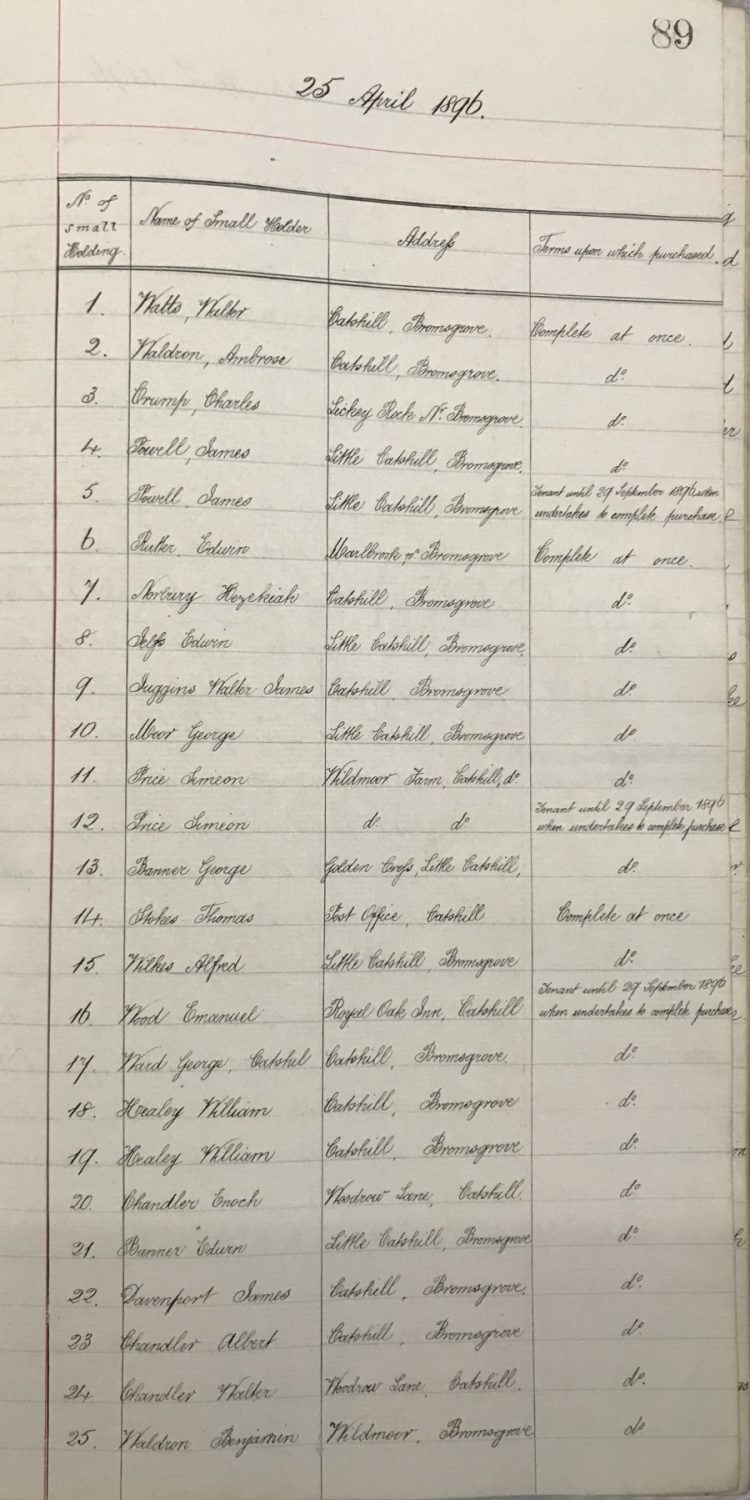
The successful applicants for plots 1 through to 24, noted in the Minutes of the Small Holdings Committee Vol. 1 on 25th April 1896 Photograph © Worcestershire Archive and Archaeology Service
One of the most interesting deposits found in the archive contained these beautifully drawn specifications for the erection of cottage residences on the Woodrow Estate.
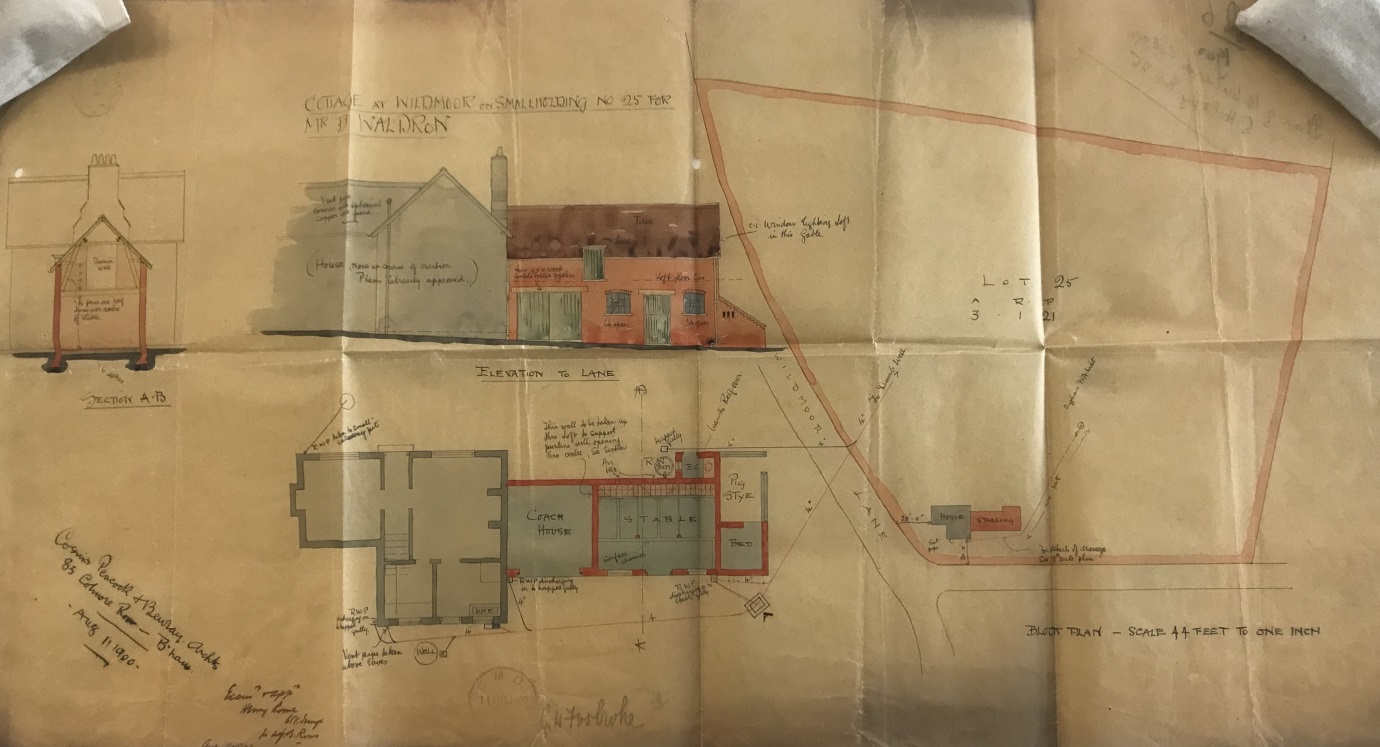
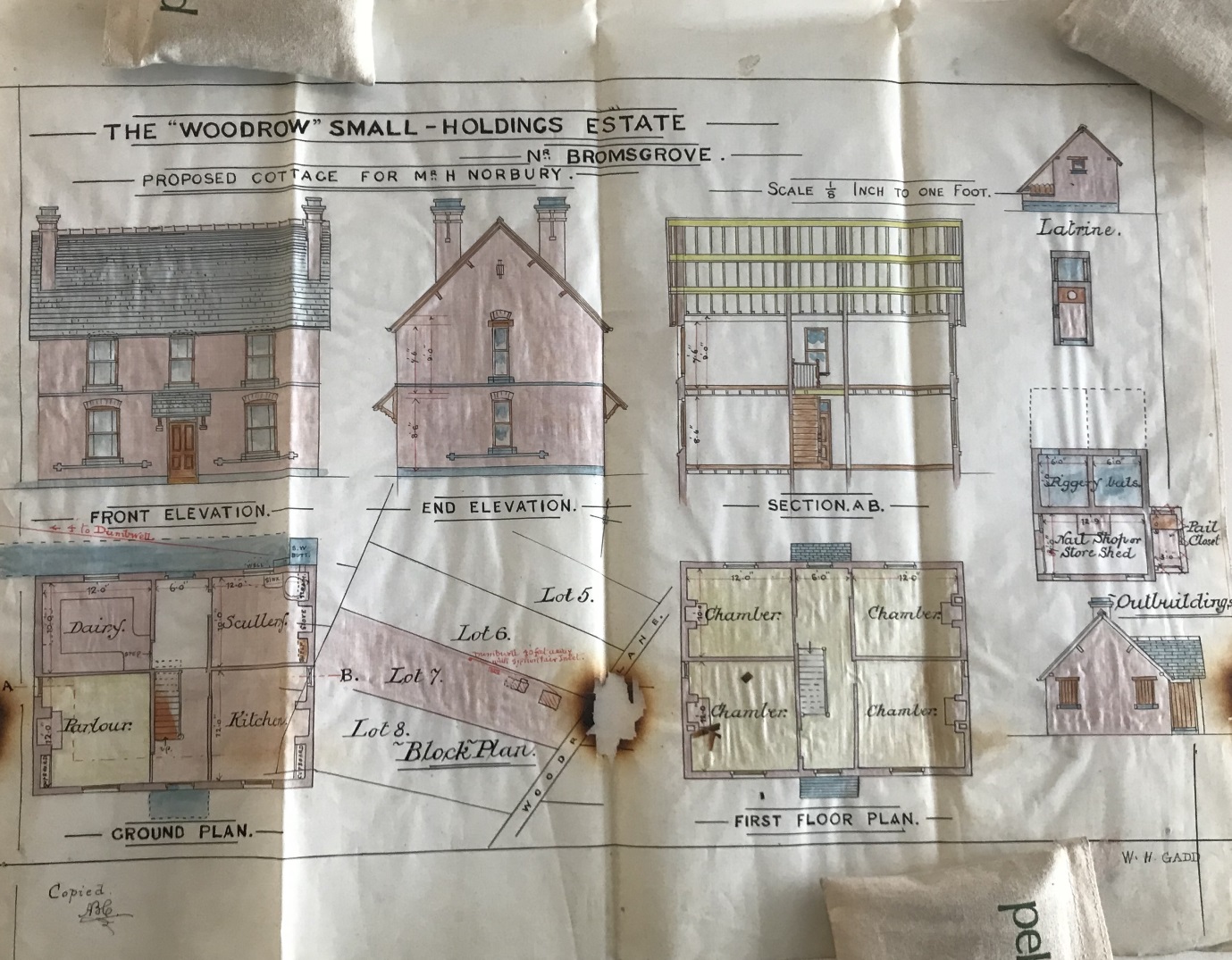
Photographs © Worcestershire Archive and Archaeology Service
Acknowledgements
Special thanks to Alan Wadsworth, Project Leader of the Worcestershire Farmsteads Project, who has given his time so generously in the pursuit of archival material and information.
Bibliography
Collings, J., Land reform, occupying ownership, peasant propriety and rural education, 1906, cited in S., Wade Martins, Wade Martins, S., ‘Smallholdings in Norfolk, 1890-1950: a social and farming experiment’, The Agricultural History Review, vol. 54, part. 2, 2006, pp. 304-330. Available from British Agricultural History Society (accessed 22 June, 2018)
Shrubsole, G., How the Extent of County Farms has Halved in 40 Years, 2018 (accessed 22 June, 2018)
Smallholdings Committee and Smallholdings and Allotments Committee. Minutes, 1892-1947. Worcestershire Archive and Archaeology Service, 224.101 BA611/1
The Rt. Hon. A. H. Dyke Acland, et al, ‘The Land: The Report of the Land Enquiry Committee‘, vol. I. Rural, 3rd Edition, 1913, Hodder and Stoughton, London, New York, Toronto. Available from Internet Archive (accessed 22 June, 2018)
Wade Martins, S., ‘Smallholdings in Norfolk, 1890-1950: a social and farming experiment‘, The Agricultural History Review, vol. 54, part. 2, 2006, pp. 304-330. Available from British Agricultural History Society (accessed 22 June, 2018)
Worth the read not least for the wonderful names Nehemiah Juggins and Hezekiah Norbury!